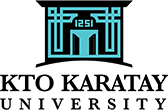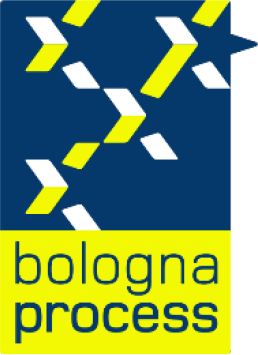Medical Imaging Techniques
Course Details

KTO KARATAY UNIVERSITY
Vocational School of Medical Services
Programme of Medical Imaging Techniques
Course Details
Vocational School of Medical Services
Programme of Medical Imaging Techniques
Course Details

| Course Code | Course Name | Year | Period | Semester | T+A+L | Credit | ECTS |
|---|---|---|---|---|---|---|---|
| 02921007 | Protocol Information | 1 | Spring | 2 | 2+0+0 | 3 | 3 |
| Course Type | Elective |
| Course Cycle | Associate (Short Cycle) (TQF-HE: Level 5 / QF-EHEA: Short Cycle / EQF-LLL: Level 5) |
| Course Language | Turkish |
| Methods and Techniques | - |
| Mode of Delivery | Face to Face |
| Prerequisites | - |
| Coordinator | - |
| Instructor(s) | Asst. Prof. Halil TÜRKTEMİZ |
| Instructor Assistant(s) | - |
Course Instructor(s)
| Name and Surname | Room | E-Mail Address | Internal | Meeting Hours |
|---|---|---|---|---|
| Asst. Prof. Halil TÜRKTEMİZ | B-132 | [email protected] | 7496 | Monday 14:00-15:00 |
Course Content
Bu dersin içeriği; toplumsal yaşamı düzenleyen kurallar ve iş yaşamını düzenleyen kurallardan oluşmaktadır.
Objectives of the Course
In this course, to make students comprehend the place and importance of protocol in social life and business environment; to gain the protocol information they will use in their business and social lives; to develop the ability to exhibit and apply this information as a behavior when working with people and institutions in contact at the appropriate place and time; It is aimed to provide a health personnel who applies these rules with the ability to represent the institution they work for and to set an example for other employees.
Contribution of the Course to Field Teaching
| Basic Vocational Courses | |
| Specialization / Field Courses | |
| Support Courses | X |
| Transferable Skills Courses | |
| Humanities, Communication and Management Skills Courses |
Relationships between Course Learning Outcomes and Program Outcomes
| Relationship Levels | ||||
| Lowest | Low | Medium | High | Highest |
| 1 | 2 | 3 | 4 | 5 |
| # | Program Learning Outcomes | Level |
|---|---|---|
| P | 4 | |
| P | 3 |
Weekly Detailed Course Contents
| Week | Topics |
|---|---|
| 1 | Protocol Concept |
| 2 | Rules Regulating Social Life |
| 3 | Rules Regulating Work Life |
| 4 | Protocol Rules Applied in Institutions and Organizations I |
| 5 | Protocol Rules Applied in Institutions and Organizations II: Subordinate-superior relations |
| 6 | Protocol Rules Applied in Institutions and Organizations III: Protocol rules on the phone |
| 7 | Protocol Rules Applied in Institutions and Organizations IV: Protocol rules in written and verbal communication |
| 8 | Midterm |
| 9 | Application Protocol Rules in Institutions and Organizations V: Protocol rules in vehicles |
| 10 | Protocol Rules Applied in Institutions and Organizations VI: Appearance and protocol rules |
| 11 | Protocol Rules to be Applied at Corporate Events VII: Ceremonies |
| 12 | Protocol Rules to be Applied at Corporate Events VIII: Meetings and Invitations |
| 13 | Protocol Rules to be Applied at Institutional Events IX: Visits |
| 14 | Protocol Rules to be Applied in Corporate Events X: Celebration, Acknowledgment and Condolence |
Textbook or Material
| Resources | Ayturk, N. (2019). Protocol Management-Protocol and Code of Conduct in Public Life. 1st Edition, Nobel Academic Publishing, Ankara. |
Evaluation Method and Passing Criteria
| In-Term Studies | Quantity | Percentage |
|---|---|---|
| Attendance | - | - |
| Laboratory | - | - |
| Practice | - | - |
| Field Study | - | - |
| Course Specific Internship (If Any) | - | - |
| Homework | - | - |
| Presentation | - | - |
| Projects | - | - |
| Seminar | - | - |
| Quiz | - | - |
| Listening | - | - |
| Midterms | 1 | 40 (%) |
| Final Exam | 1 | 60 (%) |
| Total | 100 (%) | |
ECTS / Working Load Table
| Quantity | Duration | Total Work Load | |
|---|---|---|---|
| Course Week Number and Time | 14 | 2 | 28 |
| Out-of-Class Study Time (Pre-study, Library, Reinforcement) | 14 | 2 | 28 |
| Midterms | 1 | 14 | 14 |
| Quiz | 0 | 0 | 0 |
| Homework | 0 | 0 | 0 |
| Practice | 0 | 0 | 0 |
| Laboratory | 0 | 0 | 0 |
| Project | 0 | 0 | 0 |
| Workshop | 0 | 0 | 0 |
| Presentation/Seminar Preparation | 0 | 0 | 0 |
| Fieldwork | 0 | 0 | 0 |
| Final Exam | 1 | 20 | 20 |
| Other | 0 | 0 | 0 |
| Total Work Load: | 90 | ||
| Total Work Load / 30 | 3 | ||
| Course ECTS Credits: | 3 | ||
